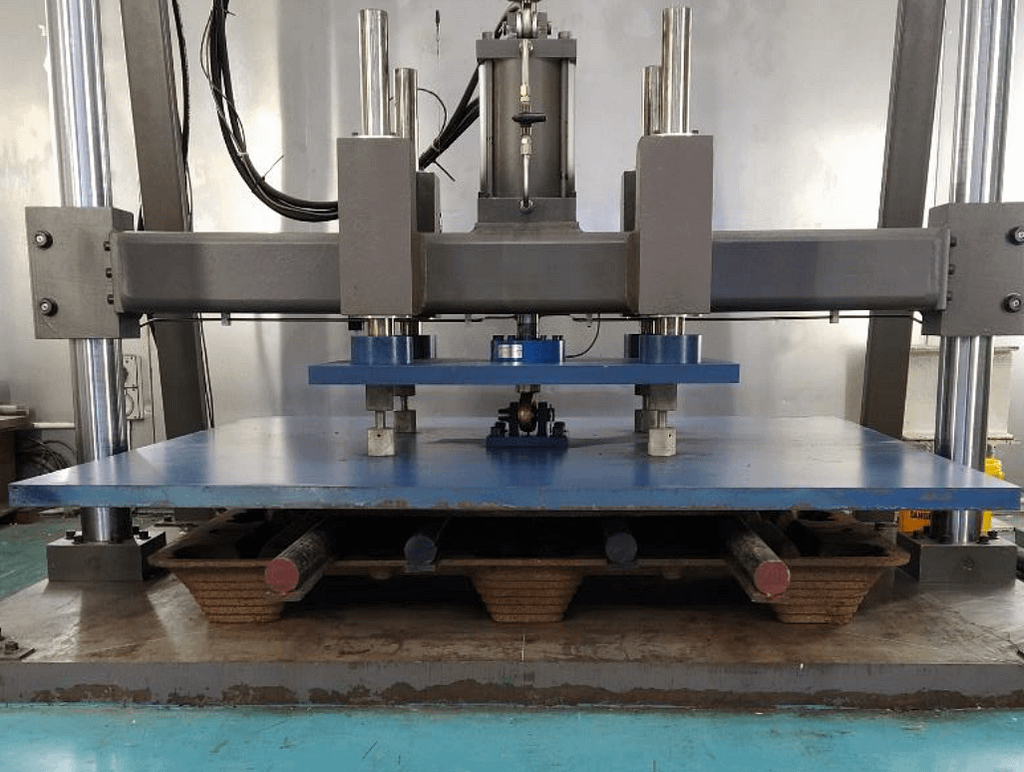Molded pallets, also known as presswood pallets, compressed wood pallets, or wood fiber pallets, are gaining popularity due to their durability, lightweight design, and environmental benefits. But how much weight can they actually support? This article explores the Presswood Pallet load capacity, the factors that influence their strength, and how they compare to traditional wooden and plastic pallets.
Types of Load Capacities for Presswood Pallets
When selecting a pallet for your business, it’s essential to understand its load capacity. Molded pallets are categorized into three main load types:
1. Presswood Pallet Static Load Capacity

A pallet’s static load refers to the maximum weight it can support while resting on a flat surface without being moved. Molded pallets typically have a static load capacity of up to 6,000 kg (13,200 lbs), making them ideal for heavy-duty storage applications. If you need a heavy-duty presswood pallet for warehouse storage, understanding the static load is crucial.
2. Dynamic Load Capacity

The dynamic load is the weight a pallet can carry while being lifted or transported by a forklift or pallet jack. Molded pallets generally support between 1,500 kg and 2,500 kg (3,300–5,500 lbs) in dynamic loads, depending on their size and material composition. Businesses searching for a durable molded pallet for logistics and transportation should consider this factor.
3. Racking Load Capacity

Racking load is crucial for warehouse storage, as it determines the weight a pallet can hold while placed on a racking system with no support underneath. Most molded pallets have a racking load capacity of up to 1,000 kg (2,200 lbs), although this varies based on design and reinforcement. Companies looking for an industrial-grade molded wood pallet for shelving and racking need to assess this specification carefully.
Factors That Affect Molded Pallet Strength
Several factors influence how much weight a compressed wood pallet can handle:
1. Material Composition
Molded pallets are manufactured using wood fiber and adhesives such as UF (Urea-Formaldehyde), MUF (Melamine-Urea-Formaldehyde), or MDI (Methylene Diphenyl Diisocyanate). The type of resin used affects the pallet’s strength, durability, and moisture resistance. If you’re seeking a high-strength molded pallet with enhanced durability, consider the material composition.
2. Manufacturing Process
Molded pallets are produced through a high-pressure compression molding process, ensuring uniform density and structural stability. The compression process significantly enhances their load-bearing capacity compared to traditional wooden pallets. If you need a high-load presswood pallet for export and storage, this manufacturing method ensures reliability.
3. Structural Design
- Nestable pallets are designed to save space but may have slightly lower load capacities.
- Reinforced rib designs provide extra strength for racking applications.
- Thicker molding increases overall durability and weight tolerance.
4. Environmental Conditions
Although presswood pallets are treated to resist moisture and pests, extreme humidity or temperature changes can affect their performance. Proper storage in dry conditions helps maintain their structural integrity. If you’re searching for a weather-resistant molded pallet for outdoor use, consider moisture-proof designs.
Why Choose a Compressed Pallet for Heavy Loads?
Molded pallets offer several advantages for businesses handling heavy goods:
✅ Eco-Friendly Molded Pallets – Made from recycled wood fibers, reducing waste. ✅ Lightweight Presswood Pallets – Lowers shipping costs without compromising strength. ✅ ISPM 15 Exempt Export Pallets – No fumigation required for international shipping. ✅ Durable Industrial Pallets – High load-bearing capacity for various applications.
Industry Applications
Due to their strength and compliance with international shipping regulations, molded pallets are widely used in industries such as:
- Food & Beverage – Hygienic and ISPM 15-compliant for global shipments.
- Pharmaceuticals – Safe for transporting sensitive products.
- Electronics – Lightweight yet durable for fragile items.
- Automotive – Capable of handling heavy machinery parts.
Comparison: Molded Pallets vs. Plastic & Traditional Wood Pallets
| Feature | Molded Pallets | Plastic Pallets | Traditional Wood Pallets |
|---|---|---|---|
| Weight Capacity | High | High | Moderate |
| Eco-Friendliness | Yes | No | Yes |
| ISPM 15 Exempt | Yes | Yes | No |
| Durability | High | Very High | Moderate |
| Cost-Effectiveness | High | Low | Moderate |
Frequently Asked Questions (FAQs)
1. What is the difference between static and dynamic load?
- The static load is the weight a pallet can support while stationary.
- Dynamic load refers to the weight a pallet can carry while being lifted or moved.
2. Can molded pallets be used for export?
Yes! Molded pallets are ISPM 15-exempt, making them a hassle-free option for international shipping. They are perfect for global trade, logistics, and supply chain management.
3. Are compressed wood pallets better than plastic pallets?
It depends on your needs! Molded pallets are eco-friendly, cost-effective, and strong, while plastic pallets have superior durability but higher costs. Compressed wood pallets are an excellent choice if you’re looking for a cost-effective molded pallet alternative to plastic.
Conclusion
The load capacity of presswood pallets makes them a reliable choice for warehousing, logistics, and international shipping. Whether you need high static load support for storage or durable dynamic load capacity for transport, molded pallets offer a strong, cost-effective, and eco-friendly solution. If you are searching for the best molded pallet machine supplier to manufacture these pallets, consider investing in advanced presswood pallet production equipment.
At PalletsBiz, we specialize in providing high-quality molded pallet machines and molds to help businesses manufacture durable, customizable pallets. Contact us today to learn more about molded pallet production and how it can benefit your supply chain!
lear more about “A Comprehensive Guide to Selecting the Best Presswood Pallets for Your Business“



